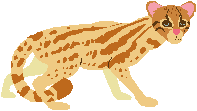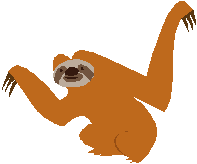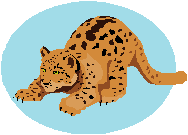interacting WITH PEERS
Bradypus tridactylus have many interactions with other species. Pale-throated three-toed sloth hair is covered in species of Cyanoderma and Trichophilus algae. Algae make a nice outer covering on the sloths fur, which makes it great camouflage. Algae on the B. tridactylus' back may also be responsible for providing certain nutrients to the sloth or even trace elements. This algae also attracts other organisms to the B. tridactylus. Cryptoses choleopi, a type of moth, live on the pale-throated three-toed sloth and get its nutrients from the algae.



Other organisms also live on the sloth. There are certain species of beetles and mites that live on the sloth. Ambylomma geayi and Ambylomma varium are 2 species of ticks that are specialized to the sloth. Other than ticks there are also species of Trichilium beetles that live in the sloths fur and feed on its dung.
Bradypus tridactylus are also prey to many organisms. When in the canopy of the rainforest, B. tridactylus is vulnerable to large snakes like anacondas, and eagles (particularly the harpy eagle). However most of the attacks happen during the rare moments when the sloth is on the ground. When on the ground, B. tridactylus is an easy target to both jaguars, ocelots, and margays.
want fun facts on sloths? click here!

